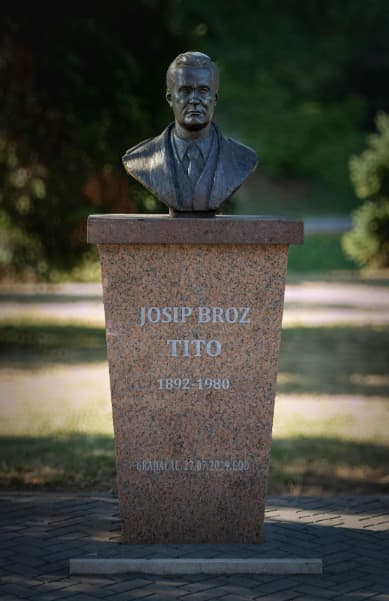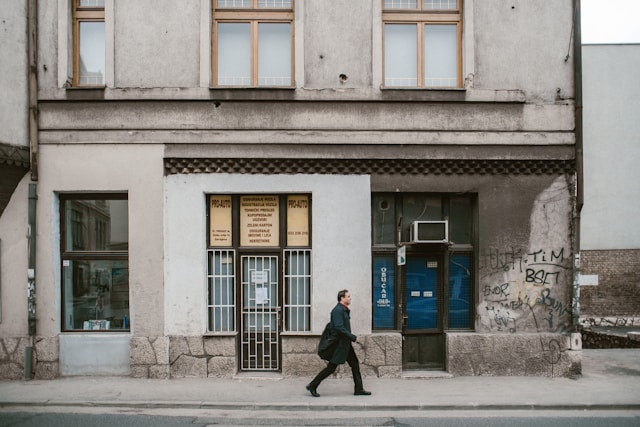Growing up, I often wondered how education systems shape societies. As I delved into the history of Yugoslavia, I was struck by how Tito’s vision extended beyond politics to profoundly influence school curricula. Education became a tool for promoting unity, instilling socialist ideals, and preparing a workforce for economic development. It was a balancing act of ideology and knowledge—one that left a lasting legacy on the generations it touched.
Understanding the power of education has always fascinated me, much like the process of identifying trusted academic resources. Finding the right tools for learning—whether a historical curriculum or platforms like top essay writer—is essential for growth and success. In this article, I’ll explore Tito’s influence on Yugoslav school curricula, examining how it merged ideology with practical knowledge and what it teaches us about the transformative power of education.
The Foundations of Tito’s Educational Vision
The Role of Education in a Unified Yugoslavia
Tito understood that Yugoslavia was a fragile mosaic of ethnicities, languages, and religions. Education became his primary tool for fostering unity and creating a collective Yugoslav identity. School curricula emphasized the ideals of “brotherhood and unity,” encouraging students to see themselves as part of a larger, cohesive nation rather than separate ethnic groups.
I’ve always found this effort remarkable. Imagine trying to create a single educational framework that resonates with such diverse populations. The challenge was immense, but it also reflected Tito’s determination to build a united Yugoslavia through shared values and education.
Balancing Ideology and Practicality
While the focus on unity was critical, Tito also recognized the importance of equipping students with practical skills. Vocational training played a significant role in Yugoslav schools, preparing students for industrial and agricultural careers that supported the country’s economic growth. This dual approach ensured that education wasn’t just about ideological indoctrination but also about creating a capable workforce.
Reflecting on this, I’m struck by how forward-thinking this approach was. Tito’s vision acknowledged that education could shape not only minds but also economies—a principle that remains relevant today.
Ideological Influence on Curricula

Teaching Socialist Ideals
Tito’s leadership and the socialist ideology he championed were woven into the fabric of school curricula. Subjects like history and civics glorified the Partisan struggle during World War II and Tito’s role as a unifier and leader. Textbooks presented a heroic narrative, portraying Tito as the embodiment of Yugoslav values.
Reading excerpts from Yugoslav-era textbooks, I noticed how these stories were designed to inspire loyalty and pride. For students, Tito wasn’t just a historical figure—he was a symbol of what it meant to be Yugoslav.
Promoting Unity Through Curriculum Design
Another striking aspect of the curriculum was its emphasis on celebrating diversity while promoting unity. Lessons highlighted the cultural contributions of various ethnic groups, fostering an appreciation for Yugoslavia’s rich heritage.
This approach, while admirable, wasn’t without its challenges. Balancing a unified narrative with the recognition of ethnic identities required careful consideration, and critics argue that it sometimes oversimplified the complexities of Yugoslavia’s diversity.
Limitations and Criticisms
Despite its successes, Tito’s curriculum faced criticism for its ideological bias. Alternative perspectives were often suppressed, and critical thinking was not always encouraged. The emphasis on unity sometimes overshadowed individual identities, creating tension in a multi-ethnic state.
Reflecting on these critiques, I wonder how different the experience might have been if students were given more opportunities to question and analyze the narratives presented to them.
Knowledge and Practical Education
Emphasis on Vocational Training
One of the most innovative aspects of Tito’s education policy was its emphasis on vocational schools. These institutions prepared students for roles in industry, agriculture, and technical fields, aligning education with the country’s economic needs.
I’ve read accounts of how vocational training gave students a sense of purpose and direction. It wasn’t just about learning a trade—it was about contributing to the development of Yugoslavia. This practical approach ensured that education had tangible benefits for both individuals and society.
Science and Technology in the Curriculum
Tito’s Yugoslavia also prioritized science and technology education, recognizing their importance for modernization. Schools introduced subjects like physics, chemistry, and engineering to equip students with the skills needed for a rapidly changing world.
For me, this focus on STEM education reflects a progressive mindset. By integrating scientific knowledge into the curriculum, Tito’s education system prepared students for a future where innovation would play a critical role.
Challenges in Execution
Of course, implementing these ambitious goals wasn’t without challenges. Rural schools often lacked resources, creating disparities in access to quality education. Vocational training programs sometimes struggled to keep pace with the demands of a growing economy.
These challenges highlight the difficulties of balancing vision with reality. Despite these obstacles, the effort to create an inclusive and practical education system remains one of Tito’s most significant legacies.
The Legacy of Tito’s Influence on Education
Lasting Impact on Regional Identity
Tito’s approach to education left a profound impact on those who experienced it. Even after Yugoslavia’s dissolution, many former citizens recall their schooling with a sense of nostalgia. The shared curriculum created a common bond, fostering connections across ethnic and regional lines.
I’ve spoken to individuals from different parts of the former Yugoslavia who still feel a sense of unity rooted in their educational experiences. It’s a testament to the power of a shared narrative, even in a fragmented state.
The Decline of Ideological Influence
After Tito’s death in 1980, the curriculum began to shift. As nationalism rose in the 1990s, many of the unifying elements of Yugoslav education were replaced with region-specific narratives. The emphasis on socialist ideals faded, and new curricula reflected the priorities of emerging independent states.
Reflecting on this transition, I’m struck by how education systems mirror political changes. The decline of Tito’s influence on curricula marks the end of an era, but it also raises questions about how education can adapt to shifting societal values.
Lessons for Modern Education
Tito’s attempt to balance ideology and knowledge offers valuable lessons for modern educators. In a world that often feels divided, the idea of using education to promote unity and mutual understanding remains relevant.
At the same time, it’s crucial to encourage critical thinking and diverse perspectives. While Tito’s curriculum aimed to inspire loyalty and pride, future systems must also empower students to question, analyze, and shape their own narratives.
Challenges of Writing an Unbiased History
The Difficulty of Objectivity in Educational Content
One of the challenges of Tito’s curriculum was maintaining objectivity in teaching history. The narrative often glorified certain aspects while omitting others, creating a biased perspective.
As someone who has studied different accounts of Yugoslavia’s history, I’ve noticed how narratives shift depending on the source. This underscores the importance of presenting multiple viewpoints in education to foster a well-rounded understanding of history.
Encouraging Critical Thinking in Schools
While Tito’s curriculum emphasized unity, it sometimes fell short in promoting critical thinking. Modern education systems can learn from this by encouraging students to question and analyze the narratives they encounter.
For me, this is one of the most valuable lessons from Tito’s era. Education should not only impart knowledge but also empower students to think critically and independently.
Conclusion
Tito’s influence on Yugoslav school curricula was a bold and ambitious attempt to shape a diverse nation through education. By balancing ideology and practical knowledge, his vision fostered unity, promoted economic development, and left a lasting legacy on those who experienced it.
Reflecting on this history, I’m reminded of the transformative power of education—not just as a means of acquiring knowledge but as a tool for shaping societies. While Tito’s approach wasn’t without its flaws, it offers valuable lessons for educators and policymakers today.
In a world that often feels divided, the idea of using education to promote unity and mutual understanding is more relevant than ever. As we navigate the complexities of modern education, Tito’s legacy reminds us of the importance of balance—between ideology and knowledge, individuality and unity, and past and future.
